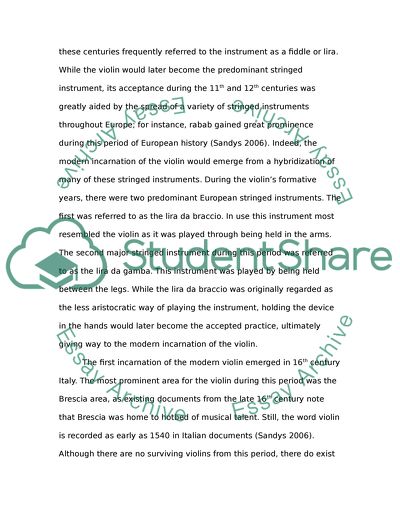History and Development of Violin Term Paper Example | Topics and Well Written Essays - 1250 words. Retrieved from https://studentshare.org/music/1434392-outline-the-history-development-of-an-instrument
History and Development of Violin Term Paper Example | Topics and Well Written Essays - 1250 Words. https://studentshare.org/music/1434392-outline-the-history-development-of-an-instrument.


